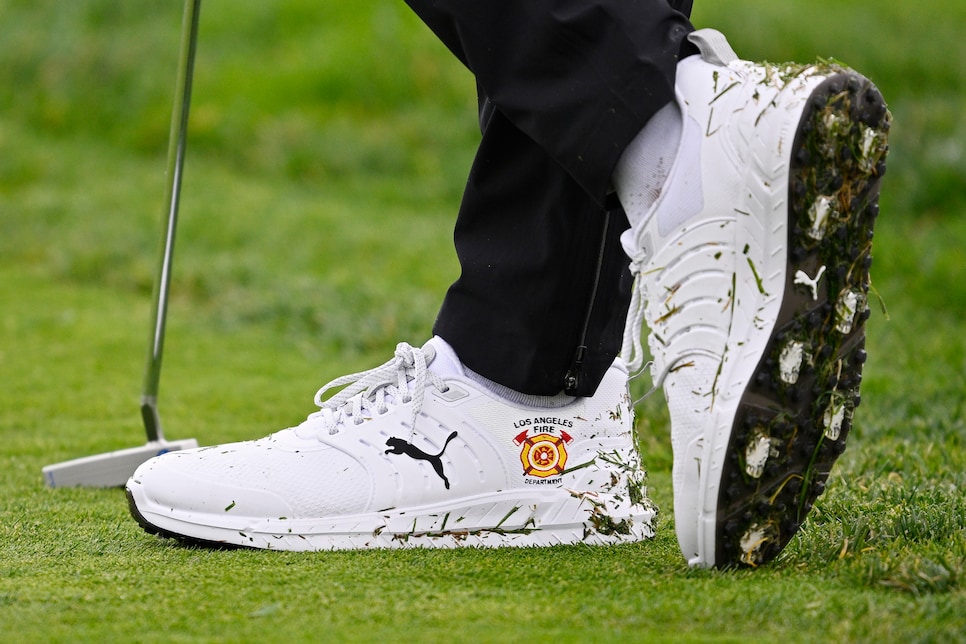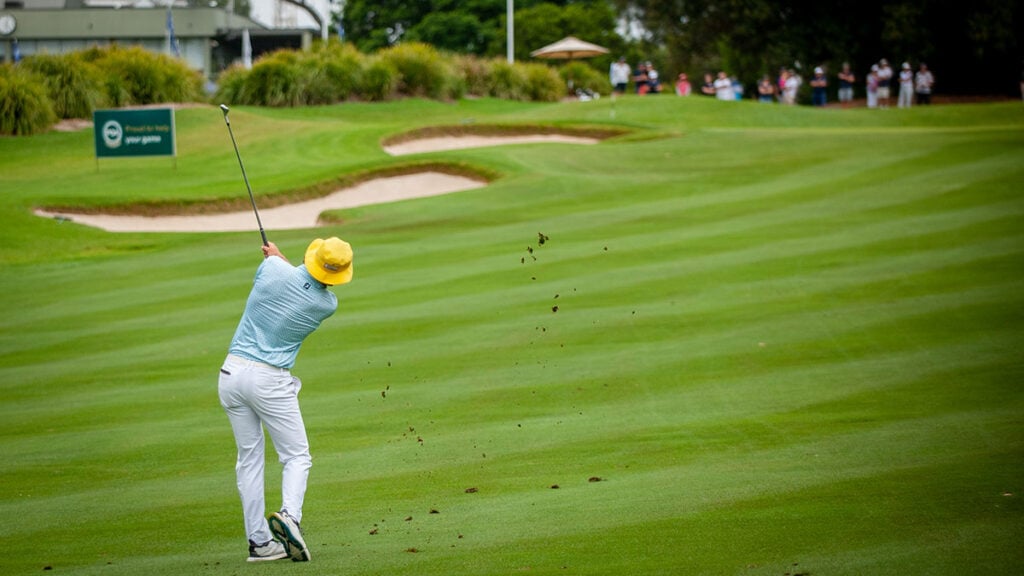[PHOTO: Harry How]
Question: I went to a PGA Tour event recently and swore I heard the crunch of metal spikes when some players walked across the cartpaths. Weren’t metal spikes banned a long time ago?
Answer: Your ears didn’t deceive you! Metal spikes are permissible on the PGA Tour, which might come as a surprise to literally every golfer who’s used to seeing a sign with the words “soft spikes only” somewhere at their local course.
Bay Hill Club & Lodge, site of the PGA Tour’s Arnold Palmer Invitational each March, requires soft spikes for nearly all rounds – with one exception. When the tour rolls into town, the rule is relaxed and pros are allowed to walk the course with metal spikes.

It might seem silly to bend the rules for one faction of golfers, but tour players have been wearing metal spikes for decades – and if they think something gives them an advantage, they’ll take it. There’s a belief among the contingent still wearing the old-school studs that they can provide more traction and stability compared to soft spikes.
While that might have been the case in the early 1990s when soft spikes burst onto the scene, the technology in the newer spikes has continued to improve, to the point where it’s difficult to find a noticeable performance edge with traditional metal ones.
These days, soft spikes are far and away the most popular option at retail. And they won’t give your course superintendent a full-on panic attack when you step foot on the greens.
As for the number of players still using metal spikes at the professional level, it’s roughly 15 percent of the field during a given tournament week. That’s not a significant number. As you might expect, the number is much smaller at your average course, assuming you can find one that actually allows metal spikes.
For the curious gearheads out there, Champ’s Pro Stinger model remains the most popular metal spike in the marketplace and is used by many tour pros. This “hybrid” offering – once Tiger’s spike of choice – offers a metal tip surrounded by a polymer outer (similar to what’s found in a soft spike) that allows the outsole to hug the ground through impact.
There’s always a chance metal spikes disappear completely from the tour landscape at some point, but I wouldn’t hold my breath. Tour upstart Tom Kim, who’s only 22, wears metal spikes during competition, which suggests they still have staying power at golf’s highest level.
Until the younger generation phases out metal spikes completely, you’ll continue to see them in some capacity on tour. And hear that distinct crunch on the cartpaths.




